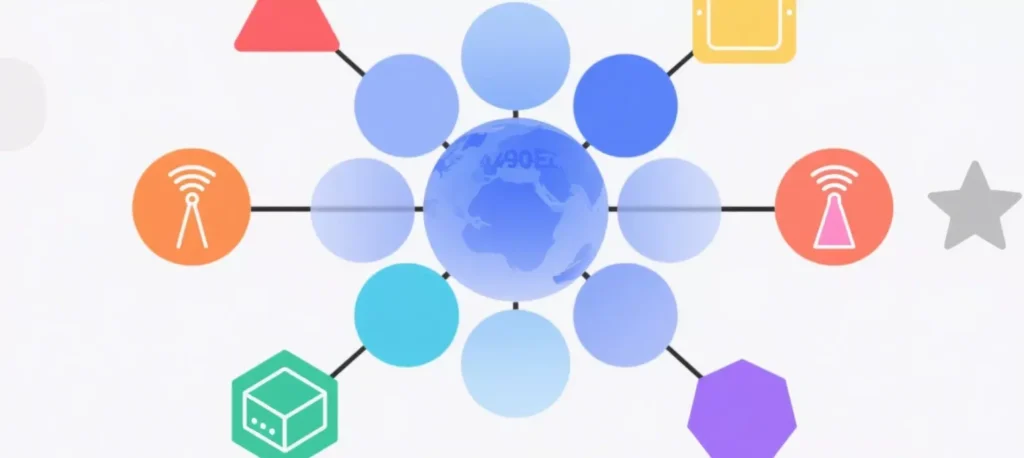Web content scraping tools represent a cornerstone of modern data acquisition, enabling the automated extraction of structured information from websites through algorithms that parse HTML, CSS, and JavaScript elements. These tools operate on principles of computer science, including pattern recognition, natural language processing, and network protocols, transforming unstructured web data into usable formats like CSV, JSON, or databases. In an era where big data drives decision-making, web scraping facilitates research in fields such as market analysis, machine learning training, and scientific monitoring. However, challenges like anti-scraping measures—rooted in cybersecurity defenses—necessitate sophisticated approaches to ensure ethical and efficient operation.
From a scientific perspective, web scraping mimics biological foraging behaviors, where agents systematically gather resources from dynamic environments. This tutorial-style article delves into the underlying mechanisms, provides practical guidance on tool selection and usage, and explores advanced integrations, equipping readers with the knowledge to harness these technologies responsibly in 2025.

The Fundamentals of Web Content Scraping and Data Structures
At its core, web content scraping involves interpreting the Document Object Model (DOM) of a webpage, a tree-like structure representing HTML elements as nodes in a graph. Tools employ selectors, such as XPath or CSS queries, to navigate this graph and extract data points, drawing on graph theory for efficient traversal. For instance, dynamic sites powered by JavaScript require headless browsers to render content, simulating human interactions via automation scripts.
Scientifically, this process aligns with information retrieval theory, where relevance is determined by matching patterns in data streams. Anti-bot mechanisms, like CAPTCHAs or rate limiting, exploit anomalies in request patterns—such as high-frequency queries from a single IP—to block access. Understanding HTTP protocols is essential: GET requests fetch pages, while headers mimic browsers to avoid detection. Research indicates that well-designed scrapers can achieve data accuracy rates above 95% when handling structured content, but variability in site layouts demands adaptive algorithms.
How Web Content Scraping Tools Work: A Step-by-Step Mechanism
The operation of a web content scraping tool can be broken down into a logical sequence, illustrating key concepts in algorithmic design and network communication. Consider a typical workflow:
1.Target Identification:
Specify the URL and data elements (e.g., product prices on an e-commerce site). This step involves URL parsing, where components like query parameters are analyzed for patterns.
2.Request Dispatch:
The tool sends HTTP requests, often using libraries like Requests in Python, to retrieve the page source. For JavaScript-heavy sites, tools integrate with Selenium or Puppeteer to execute scripts and render dynamic content.
3.Data Parsing:
Parse the HTML using libraries such as BeautifulSoup or lxml, applying regular expressions (regex) for pattern matching. This draws on string theory in computing, where finite automata process text efficiently.
4.Extraction and Storage:
Extract targeted data via selectors, then store it in structured formats. Error handling ensures robustness against site changes, employing try-except blocks in code.
5.Iteration and Scheduling:
For large-scale scraping, loop through paginated results or schedule runs using cron jobs, optimizing for bandwidth with delays to mimic human behavior.
This mechanism exemplifies parallel processing, where multi-threaded scrapers can handle thousands of requests concurrently, reducing time complexity from O(n) to O(log n) in optimized setups.

Practical Tutorials: Implementing Web Content Scraping
To apply these concepts, consider a hands-on tutorial using Octoparse for scraping news headlines:
1.Install and launch Octoparse, then create a new task by entering the target URL (e.g., a news site).
2.Use the built-in browser to select elements: Click on headlines to auto-detect patterns, applying XPath for precision.
3.Configure workflow: Add loops for pagination and set delays (e.g., 2-5 seconds) to avoid rate limits.
4.Run the task locally or in the cloud, exporting data to CSV for analysis.
5.Monitor logs for errors, adjusting selectors if site structure changes.
For programmers, a Python-based tutorial with BeautifulSoup:
python
import requestsfrom bs4 import BeautifulSoupurl = 'https://example-news.com' headers = {'User-Agent': 'Mozilla/5.0'} # Mimic browserresponse = requests.get(url, headers=headers)soup = BeautifulSoup(response.text, 'html.parser')headlines = soup.find_all('h2', class_='article-title') # CSS selectorfor headline in headlines: print(headline.text.strip())
This script demonstrates parsing efficiency, with extensions for handling APIs or JSON responses.
Integrating Proxies: Enhancing Scraping with IPFLY
When deploying web content scraping tools on a large scale, IP blocking poses a significant hurdle, as repeated requests from the same address trigger defenses. Integrating proxy services mitigates this by rotating IP addresses, simulating distributed user access. IPFLY, a provider of residential and datacenter proxies, offers seamless compatibility with tools like Bright Data or ZenRows, supplying high-anonymity IPs across global locations to evade geoblocks and rate limits. By configuring IPFLY proxies in scraper settings—such as via API keys—users can achieve uninterrupted data flows, aligning with network diversity principles for robust operations.
Need high-standard proxy strategies or stable enterprise-grade services? Visit IPFLY.net now for professional solutions, and join the IPFLY Telegram community—get industry insights and customized tips to fuel your business growth and seize opportunities!

Advanced Techniques: AI Integration and Optimization
Advancing beyond basics, AI-enhanced tools like Firecrawl employ machine learning to adapt to site changes, using neural networks for semantic extraction. Optimization techniques include:
Headless Browsing: Use Puppeteer for JavaScript execution, measuring performance with metrics like page load time.
Data Cleaning: Apply NLP libraries (e.g., NLTK) to refine extracted text, removing noise via tokenization.
Scalability: Deploy on cloud platforms like AWS, utilizing containerization (Docker) for parallel processing.
These methods reduce computational overhead, with studies showing AI integration can improve accuracy by 20-30% on unstructured data.
Educational Benefits and Ethical Considerations
Web content scraping tools foster learning in data science, teaching concepts like API interactions and ethical hacking principles. Tutorials can simulate real-world scenarios, such as sentiment analysis on scraped social media.
Ethically, adhere to robots.txt files and terms of service; unauthorized scraping may violate laws like the CFAA. Prioritize public data and obtain permissions for commercial use, promoting transparency in digital ecosystems.
In conclusion, web content scraping tools blend scientific rigor with practical utility, enabling efficient data harvesting in 2025. By mastering these through tutorials, users can unlock insights while navigating technical and ethical landscapes.


